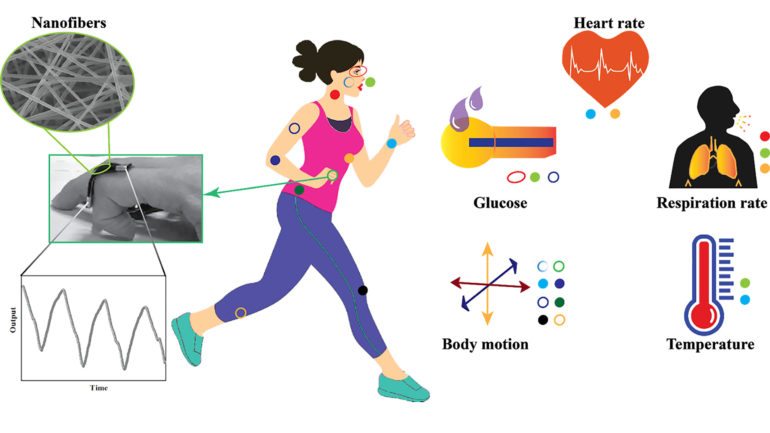A shirt that monitors your blood pressure or a pair of socks that can keep track of your cholesterol levels might be just a few years away from becoming reality.
In an article published in Applied Physics Reviews, researchers examine the use of microfibers, and even smaller nanofibers, as wearable monitors that could keep track of a patient’s vital signs.
The microfiber- and nanofiber-based technology addresses growing concerns in the medical community about monitoring chronic illnesses like diabetes, asthma, obesity, and high blood pressure as the population ages.
“Therefore, the demand for a personalized health care system which detects users’ bio-signals at any given location and time is rapidly growing,” said author Rituparna Ghosh.
The wearable fibers are highly sensitive and flexible and can be used to gauge blood pressure, heart rate, sleep quality, cholesterol levels, oxygen levels, and other vital signs. Because of their small size, they can be applied directly to the skin or woven into garments like shirts, socks, neckwear, or wristbands.
“You could have watches. You could have tattoos. It is usable in almost any form,” said Ghosh. “You could have something like a face mask. It could be a handkerchief which you put on your wrist and it starts giving data.”
Author Seeram Ramakrishna, from the National University of Singapore, said one of the most promising nanofiber technologies—piezoelectric sensors, which are powered by mechanical energy—could be ready to go to market in less than three years.
Other technologies, he said, may be ready for public use in anywhere from five to eight years.
Between now and then, Ramakrishna said more research needs to be done on making the fiber sensors more durable, so they can be used repeatedly, and coming up with a power source for them that is both reliable and portable. It also will take time, he said, to assure the medical community that the technology is accurate, and its data can be trusted for use with real-world patients.
“The medical community is always skeptical, while the wellness industry already is using these concepts,” he said. “We need a lot more cause-and-effect studies. We need to amass information so doctors will really accept that this is information they can rely on.”
The global market value of wearable technology was estimated to be more than $32 billion in 2019 and is expected to jump to as much as $74 billion by 2025 as new applications continue to emerge.
Wearable electronics move beyond rigid wristbands
More information:
“Micro/nano fiber-based non-invasive devices for health monitoring diagnosis and rehabilitation,” Applied Physics Reviews, aip.scitation.org/doi/10.1063/5.0010766
Provided by
American Institute of Physics
Citation:
Emerging wearable technology uses tiny fibers that can track your blood pressure, heart rate, and more (2020, December 1)
retrieved 1 December 2020
from https://techxplore.com/news/2020-12-emerging-wearable-technology-tiny-fibers.html
This document is subject to copyright. Apart from any fair dealing for the purpose of private study or research, no
part may be reproduced without the written permission. The content is provided for information purposes only.


